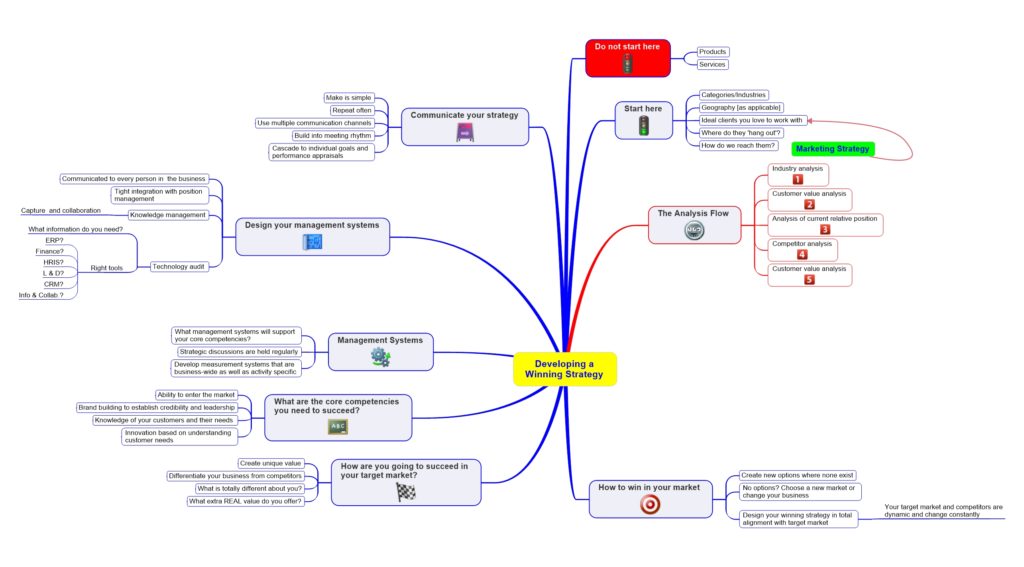by Brian Clark | capability, change, crm, learning and development, learning management systems, LMS, Uncategorized
There is no doubt accounting firms are under pressure for both fees and service delivery. This can be considered disruption. There are a few reasons for this pressure and it will only intensify. Here are some reasons:
* Businesses are questioning the amount of fees they pay annually for compliance services against the perceived value they receive from these services.
* Accounting firms are facing a technology tidal wave that will shift much of the compliance work to ‘bots’ that deliver higher accuracy and cost a fraction of a qualified accountant.
* The complex operating environment facing companies is encouraging them to seek outside expertise to remain competitive and sustainable; unfortunately they rarely look at their accountants to provide such services.
These disruptive changes are compelling proactive firms to focus on developing other capabilities to maintain and grow revenue. The most common focus is on building revenue from advisory services. One would normally think accounting firms are well positioned to delivery advisory services. They may be well positioned, but many lack the competencies needed to uncover opportunities, scope advisory projects and execute the delivery phase for a successful result.
We were engaged to help a firm build an advisory capability without increasing the headcount. Our project including a number of phases that included strategic planning, business model development, behavioural competency assessment, training and coaching. Our process included a small digital transformation with the inclusion of work to improve use of the incumbent information management system, CRM and the introduction of a learning management system, (LMS).
We implemented a learning management system to support our transition strategy as well as sustain competency development across the firm. Below are some of the key outcomes we have achieved thus far with the LMS.
* Communities of practice to foster sharing of ideas, best practices and content.
* Learning linked to performance reviews and career planning.
* Tracking learning and participation in communities of practice.
* Self-publishing content using standard tools like PowerPoint, Sway, audio and video.
* Team publishing by practice teams to share with teams in other locations and colleagues.
Our ongoing strategic focus for the LMS includes:
* Eliminate knowledge drain.
* Replicate the learning across the organisation at lower cost.
* Develop individual learning pathways for advisors based on subject matter expertise and market sector focus.
by Brian Clark | culture, leadership, Performance, strategy
Leaders of organisations around the world understand the strategic need to build capabilities in their organisations to remain competitive. There are many methods used to build capabilities and on-the-job training remains very common. Strategy that is designed without learning is seriously flawed.
Online learning is a key part of any strategy to build capability. In my experience, many organisations start out with a compliance focus for online learning. When moving to include other purposes for online learning, e.g. leadership development, it is critical that a framework is developed to support the learners and measurement of outcomes.
How do you create a learning strategy that will help drive performance and be fully aligned with your strategic objectives?
- Build your learning plans based on customer feedback and adapting to changes in expectations that customers have in dealing with your organisation and your competitors.
- Assess how much of your learning and development resources are allocated to frontline employees. Performance increases in your frontline employees are often easier to measure and possibly faster to achieve.
- When you develop learning plans, align the curricula to strategic objectives. A capability gap analysis is going to provide more accuracy to aligning learning with strategic objectives. I like to see capability gap analyses performed as part of a strategic planning project.
- Learning and development needs to be predictive. Your strategy is designed to keep your organisation competitive. I recommend you drill down from macro-environmental changes in your market all the way down to succession and recruitment needs within a time horizon that makes sense for your business.
To support your learning strategy and sustain performance improvements, I suggest the following:
- Consider incentivising self-directed learning. There are so many effective ways to do this.
- Standardise learning processes as much as you can to assist in measurement. You may choose different target populations for standardisation as opposed to standardising across the organisation.
- Some of the most effective capability building strategies include directly linking learning to the performance management process.
- I encourage my clients to build learning more deeply into the fabric of a culture by adding learning engagement to the key objectives for managers. I have seen excellent results when managers include learning in their weekly and/or monthly team and individual meetings or catch ups. The benefits achieved include higher levels of learning engagement and a feedback loop on learning experiences and future needs.
- Encourage blended approaches to learning by identifying subject matter experts in your organisation. You might consider adding communities of practice or a coaching/mentoring program to leverage knowledge in support of learning activities.
If you would like to discuss these ideas or want to explore implementing a new learning strategy in your organisation, you are welcome to get in touch with me via the contact details on this site.
by Brian Clark | culture, Employee Engagement, Performance
According to an excellent whitepaper by Aon Hewitt, (Getting Real About Creating a High Performance Culture, 2016),” ….46% of organisations identified defining or aligning culture as a key priority.”
Culture is a key competitive advantage. Change is occurring too rapidly to forecast accurately. The workforce is facing challenges in their personal lives that may lead to increased fear and uncertainty about the future. The separation between personal and work life has always been a myth. Now that we have non-stop news and information overload assaulting us from every device we have, it is impossible to imagine the workplace as a quarantine. It is a tough time to define, build and sustain a high performance culture.
In some experiences I have had recently, organisations have had leadership adopt a ‘batten down the hatches’ philosophy. The indicators visible to an external consultant working with such an organisation include poor strategic communication, confusion about accepted behavioural norms and fear. The fear is not always easily identified. I always find it in companies that lack meeting rhythm between managers and employees. I see it where there is little ‘ground level’ innovation going on to improve effectiveness and productivity. There are other ways fear is identified.

How does a leader deal with culture in this geo-political economic era? I suggest it is a return to some very basics of interpersonal relationship skills. It would be great if it was not a ‘return’ as opposed to a refocusing. Most people involved in an interpersonal relationship and particularly an intimate one, would identify communication as the primary contributor to the health of the relationship.
It is no different in an organisational culture. However, many leaders of organisations have behavioural styles that deliver communication in short direct bursts as opposed to a story or interactive dialogue. Communication is often delegated and diluted. People see through this and it only leads to greater fear, uncertainty and disengagement.
I believe vision is critical. Vision is critical to individuals, couples, families, organisations, communities and all the way up to nation states. Without a vision it is impossible to build a compelling strategy and even more impossible to engage people to execute the work needed to achieve strategic objectives.
Without a vision, your mission will be detached and unaligned to anything meaningful to your people. Lack of meaning equals lack of engagement. Lack of engagement kills a high performance culture.
These are only two big picture contributors to a sustainable high-performance culture. Communication and vision. There are others. I offer below two of the most impactful high- level initiatives that will contribute to changing a toxic or poor performance culture to a high performance culture.
· Learning and development is part of the culture and not dependent upon people asking permission or waiting for approval. Senior leadership support learning and allocate resources to learning opportunities openly. Learning is linked to performance management processes. Learning is used to support innovation and collaborative, social knowledge sharing.
· Senior leadership is visible and accessible. There are some huge companies I have worked with that have leaders who leverage technology to remain accessible. When senior leadership communicates, they do so openly and transparently. Senior leadership repeats vital messages to ensure there is retention. The senior leadership never cease to show the alignment of strategy to the work that people are doing throughout the organisation.
by Brian Clark | culture
It is possible to transform the paradigm that all meetings are wasting valuable time and contribute little to the organisation and its people You can reinvent your meetings to boost creativity and engagement. It just takes a bit of innovation.
When people think of meeting they typically think of people around a table engaging in conversation around an agenda. According to a report by Atlassian, a person may spend up to 31 hours in unproductive meetings per month. Adding to this scenario, 91% of people daydreamed and 73% did other work during meetings.

Meetings can boost creativity.
There is plenty of other evidence available that points to meetings having negative impacts on productivity in the workplace. However, there are some ways you can innovate to make your meetings more engaging and constructive for those attending.
An article by Sara Coene on InnovationManagement.se, identifies some new meeting formats that will help boost creativity and engagement in meetings. I recommend you check out the article and I have summarised the ideas here.
Inspiration Tours are visits to inspiring companies, organisations or other venues. Sara points out examples in Silicon Valley, Antwerp and Brussels. There are plenty of great organisations that will welcome an opportunity to host a tour and presentation that showcases their talents.
Start-up Events are excellent to get people discussing ideas and capturing insights into new ways of innovating. There are start- up incubators in most cities and these events are usually publicised.
Pecha Kucha means ‘small talk’ in Japanese. These structured events allow participants to present 20 pictures in a slide deck in 6 minutes and 40 seconds; each picture shown for 20 seconds. The article points to a 80% success rate for these presentations with thorough presenter preparation the most probably success factor.
Notes Day engages people in small groups starting first with their own team and move to other departments. The focus is on the most relevant issues facing the organisation as put forward by the participants.
World Café is often used in workshops and training events. However, the World Café format is an effective way to achieve high levels of dialogue and collaboration. Participants discuss a topic around a table hosted by person who remains at the table while others circulate to other tables. This format is excellent for ensuring ideas are captured.
There are other meeting formats described in the article and I encourage you to have a look. You can innovate to make your meeting more effective, fun and engaging.
by Brian Clark | strategy
Use this mind map as a process to develop your strategy. If you would like a copy please get in touch. 




